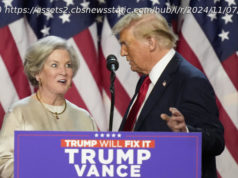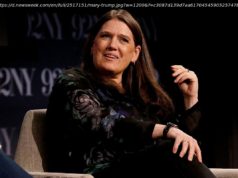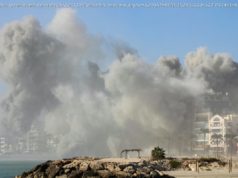When Vice President Pence reverently placed his hand on the Western Wall in Jerusalem, some female journalists were fuming. Gender segregation rules at the
When Vice President Pence reverently placed his hand on the Western Wall in Jerusalem, some female journalists were fuming.
Gender segregation rules at the Jewish prayer site meant they were stuck behind a scrum of male colleagues, struggling to get a good view of Pence.
«All my photos have a man’s shoulder in them,» said Tal Schneider, diplomatic and political correspondent for the Israeli newspaper Globes. «I have Mike, with a shoulder and a bald spot… of someone with a better view than me.»
It was the latest episode of a long-running controversy over the segregation of men and women at the Western Wall.
The Western Wall, remnants of a wall from the biblical Jewish temple complex, is considered one of the holiest spots in Judaism. In the early 20th century, men and women prayed together at the site. But in recent decades, the site has been administered by Orthodox Jewish authorities who follow the tradition of separating men and women during prayer.
Liberal Jewish groups have been lobbying for an official, expanded liberal prayer section at the site. But Israeli Prime Minister Benjamin Netanyahu scrapped plans for that following opposition from his ultra-Orthdox political partners, causing a rift with liberal religious Jewish groups in the United States.
Some female journalists angrily tweeted about the episode using the hashtag #PenceFence, because they were placed behind a fence — part of the partition that divides the Western Wall into a men’s prayer section and a smaller prayer section for women.
The partition itself did not obstruct women’s view, because they stood on a raised platform. But so did their male colleagues, standing in front of them — with tall microphone booms and camera tripods.
«I think it is shameful,» said Schneider, the Israeli journalist.
She said she argued with U. S. Consulate officials, who coordinated media coverage of the vice president’s visit, for about an hour for better visibility before Pence arrived. She said female reporters were given chairs to stand on only after the episode caught attention on Twitter.
Schneider and other female journalists berated their male colleagues, saying they ignored calls to give women a better view. One said male reporters also had preferential treatment during U. S. Ambassador to the United Nations Nikki Haley’s visit to the holy site in June.
NPR’s Tamara Keith, who arrived later as part of a group of reporters traveling with Pence, said it was hard to see over the male reporters, but U. S. officials provided chairs and removed the top of a rain tent in attempts to help female reporters get a better view.
«The Pence people ultimately took the cover off the top to improve the shot. And yelled at male reporters/photographers to stop blocking our view,» Keith wrote in an email.
Alyssa Farah, Pence’s press secretary, said in a statement, «Every effort was made to accommodate both female and male journalists while observing the rules in place at the Western Wall.»
The Western Wall Heritage Foundation, which administers the site, said it protested the attempt to cast Pence’s visit in the ongoing protest over gender separation at the site. «There will not be today, nor in the past or the future, mixing of men and women in the prayer plaza,» it said in a statement.
For years, male and female journalists covering VIP visits to the Western Wall — including President Trump’s last summer — have had to remain in separate sections, said American freelance photojournalist Heidi Levine.
Usually the number of journalists given access to cover Western Wall visits is limited, she said, and the large amount of reporters covering Pence’s visit may have contributed to women’s obstructed view.
«I’ve been dealing with this my whole career,» said Levine, who has covered Israel and the Palestinian territories for more than 30 years. She brought a ladder to photograph Pence’s visit, knowing she’d be blocked by male journalists.
She said she experiences similar limitations as a woman covering events at Palestinian mosques.
«I used to be angry,» Levine said. «Then I realized there are lots of things I can do, like being in a bedroom with women, with a woman who lost her legs in Gaza, when men couldn’t do that.»
#PenceFence was not the first controversy surrounding media coverage of the vice president’s visit.
The Foreign Press Association, representing international journalists covering Israel and the Palestinian territories, protested what it called «clear ethnic profiling» by Israeli security officials of a journalist of Palestinian descent from Finland’s state broadcaster covering Pence’s visit. The FPA said the journalist was asked to remove her bra during a search and, when she refused, was denied entry.






